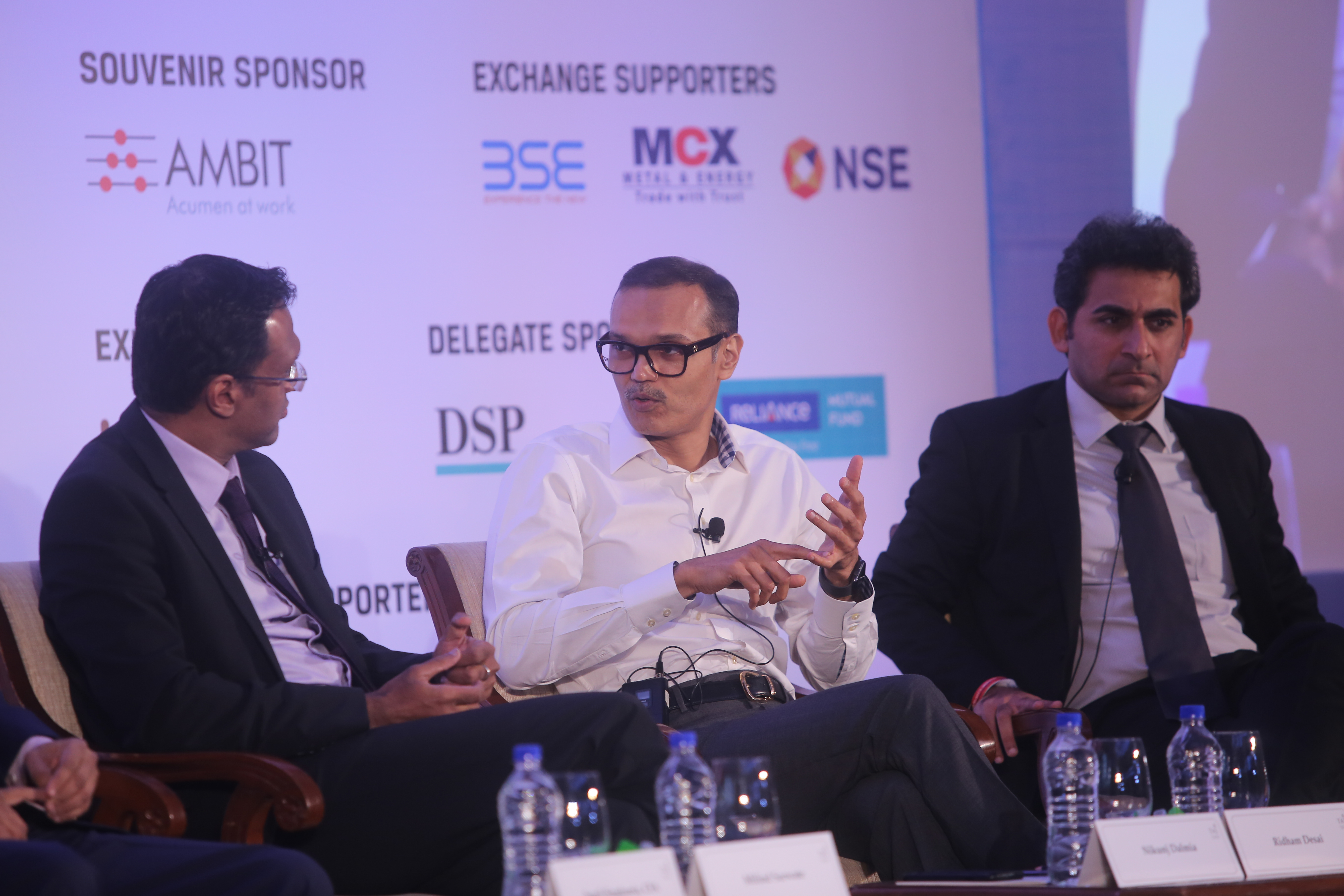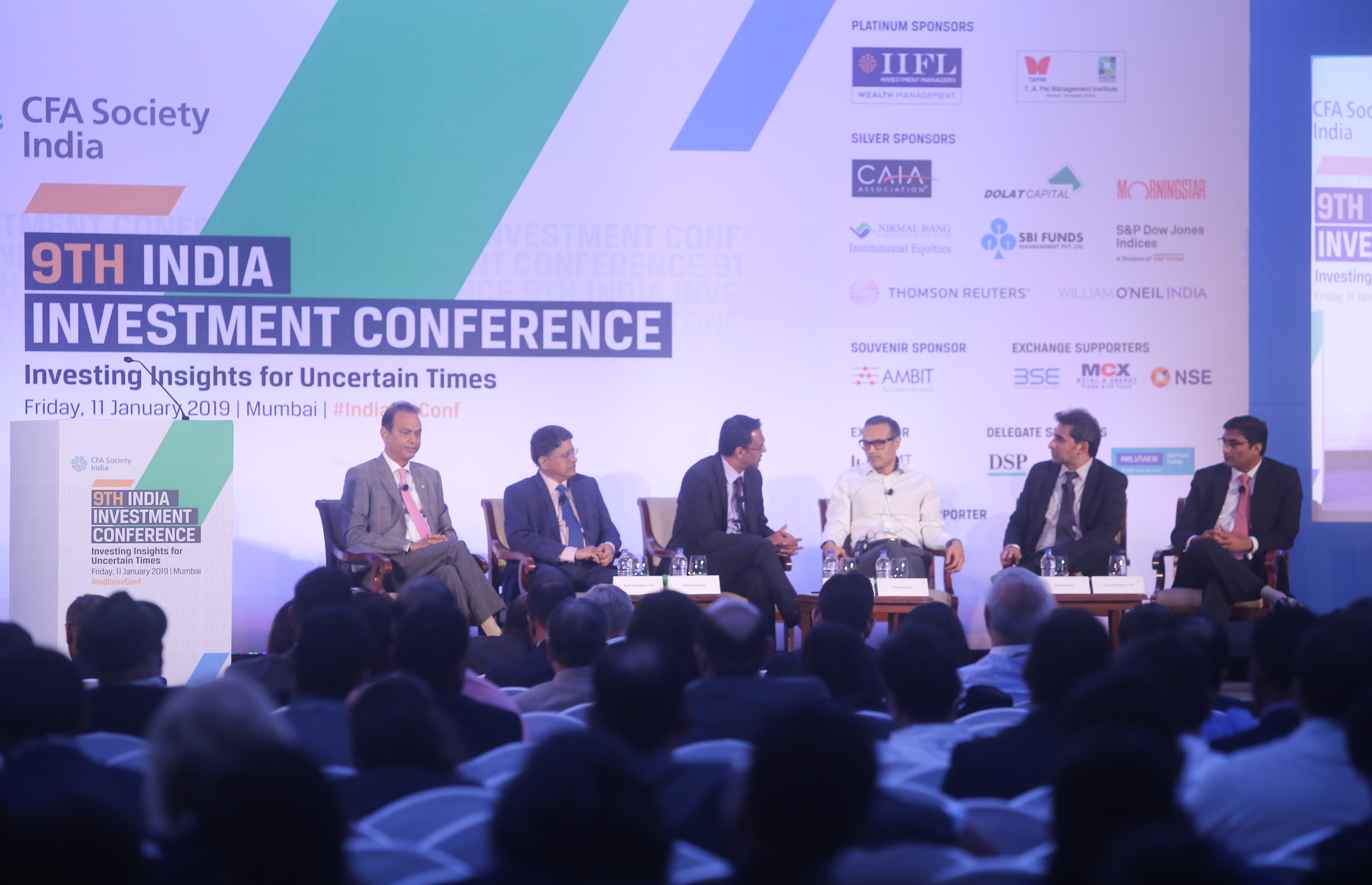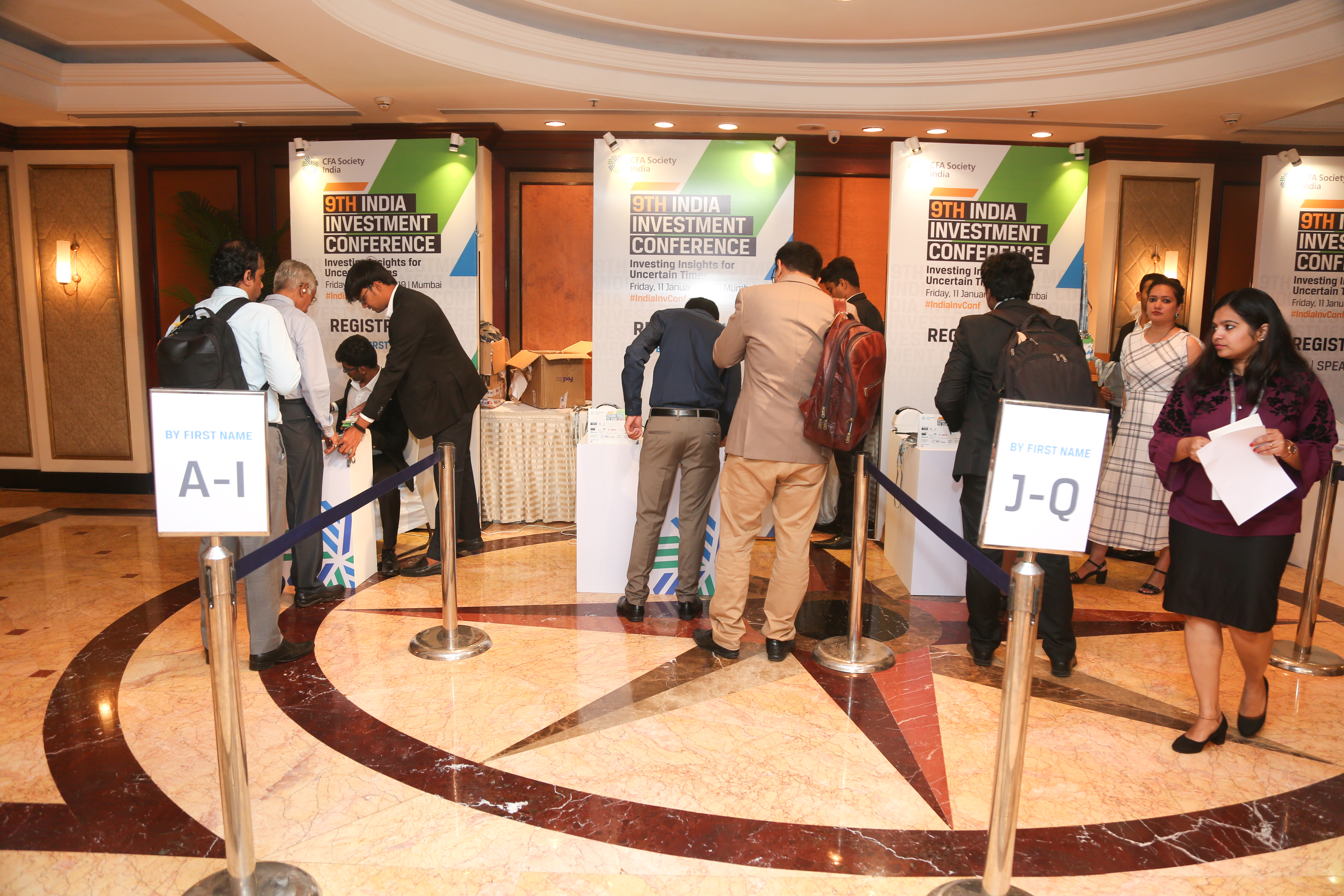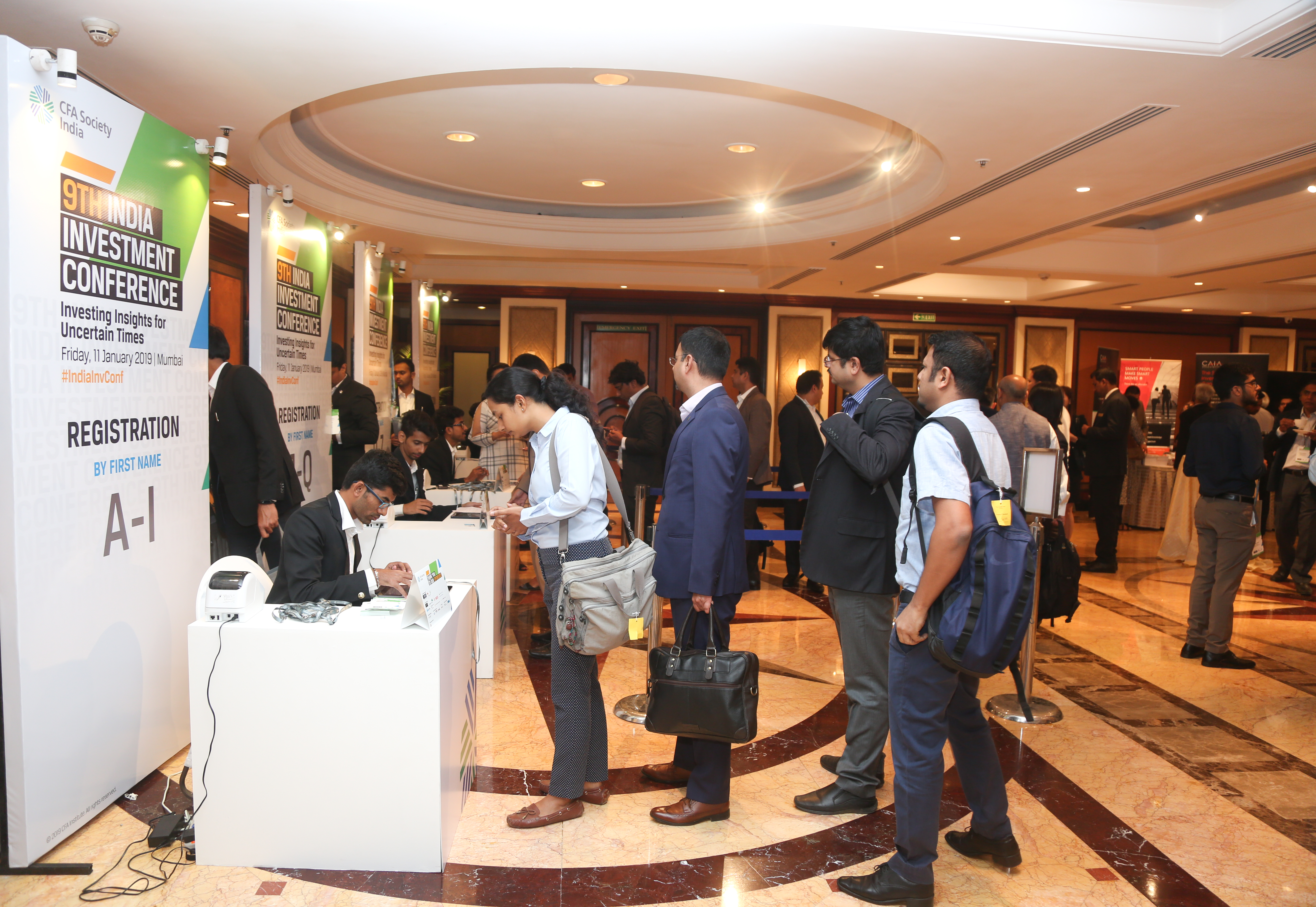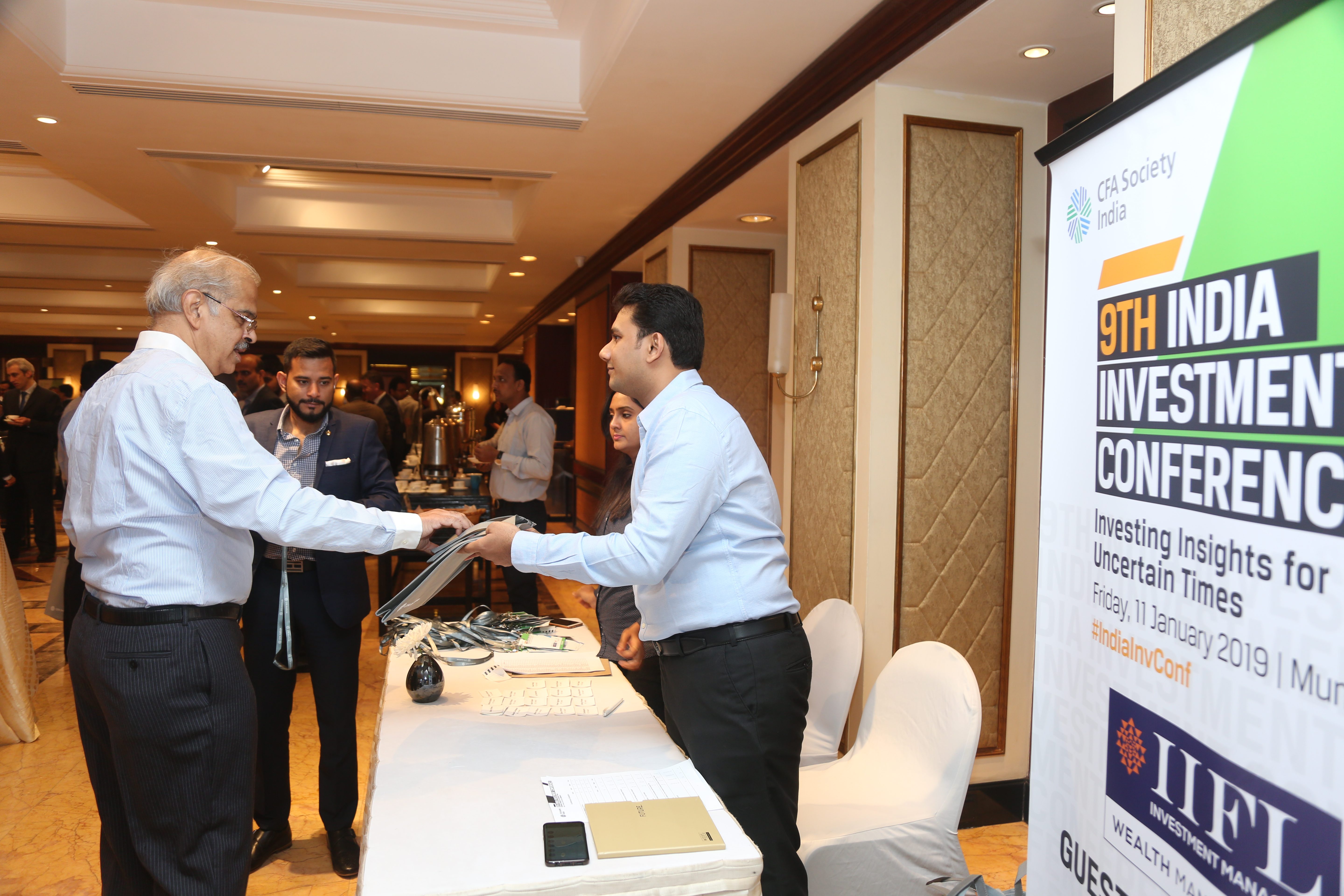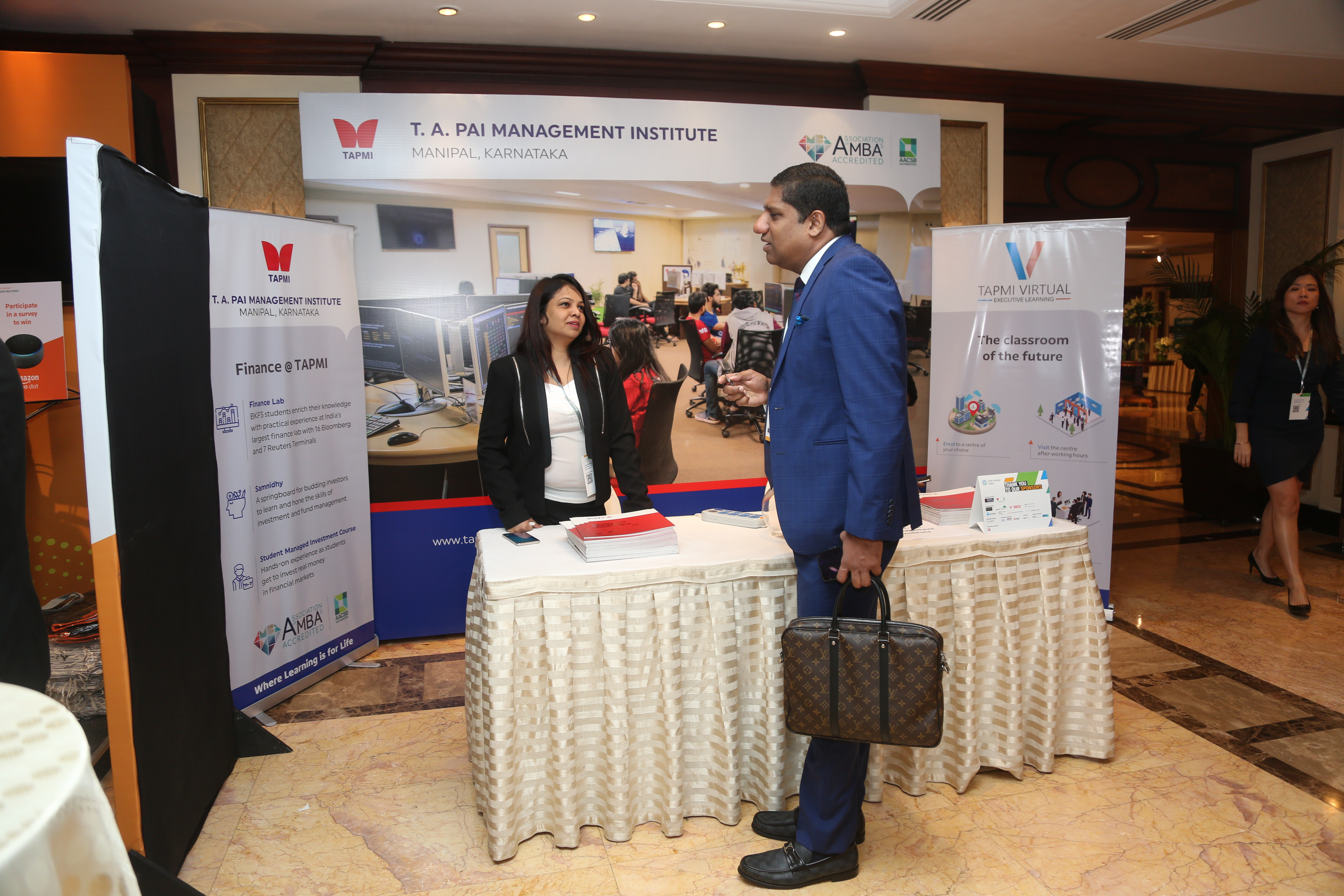- January 20, 2019
- Posted by: IshwarChidambaram, CFA
- Category:BLOG, Events, India Investment Conference, Mumbai
 Moderator: Nikunj Dalmia, Managing Editor, ET NOW
Moderator: Nikunj Dalmia, Managing Editor, ET NOW
Written by: Ishwar Chidambaram, CFA, FRM, CAIA
Delegates at the Ninth India Investment Conference (IIC19) 2019 had access to a distinguished panel. The subject was the outlook for Indian economy and Markets in 2019. The speakers included Navneet Munot, CFA, CIO, SBI Funds Management Pvt. Ltd., Milind Sarwate. Founder and CEO, Increate Value Advisors LLP, Sunil Singhania, CFA, Founder, Abakkus Asset Management, LLP, Ridham Desai, Managing Director, Head of India Research, and Equity Strategist for India at Morgan Stanley, Research Division, and Sajid Chinoy, Economist (Asia), JP Morgan. The moderator was Nikunj Dalmia, Managing Editor, ET Now, who enlivened the discussion by bringing the best out of the panelists.
The discussion began on a lighthearted note, but quickly took on serious tones as the panelists spoke about the year gone by. There was unanimous consensus that 2018 was a bad year for most asset classes (except gold), which have all generated negative returns.
Sunil opined that investors must remain optimistic and as long as India keeps growing the returns will follow. He said that the next two years will be the period when Value stocks outperform. Mutual funds are still in a nascent phase in India and are under-invested in the firms that will be future leaders of the markets. On themes for the next 1 to 3 years, he is bullish on Discretionary Consumption, and Beverages are his favorite sector. He is also bullish on utilities which are expected to return 15% annually.
Milind suggested that the rural sector is leading urban sector in consumption. News flows will reach a crescendo in the election year. On sectors, he is not very bullish on Pharma as it is not a great consumer play. In 2019, he expects the following factors to attract investors to consumer stocks- namely they are defensive, rural consumer demand will peak and digital revolution, which has ensured that the cost of creating a new brand has fallen sharply. He is bullish on firms like HUL, Dabur and smaller FMCG firms and retail plays. He expects proximity to the consumer to be important going forward.
Ridham reminded the audience that markets have long cycles. Legendary investor Howard Marks made only 6 active calls in 50 years! In India’s case, there were shocks to the system like demonetization and GST. In 2018, India witnessed the longest and deepest earnings draw-down in our nation’s history. He is sure there will be another panic in the stock markets, but feels that we are in an up-cycle. Growth will be the source of market returns. Elections are only a short term factor. Specifically, he emphasized the importance of Growth At Reasonable Price (GARP) strategy, saying that it is not good to overpay for growth. He does not prefer the term “Value”, as people often confuse it for “Multiples”. He prefers GARP.
Sajid feels that crude prices explain India’s growth very well. Right now we are witnessing a positive terms of trade impulse from crude. The monetary conditions index is at a 2-year low. Policy reforms like asset reconstruction, IBC, etc. are starting to bear fruit. He is however apprehensive that monetary, fiscal and regulatory easing combined will push India over the edge, which could prove dangerous in 2019. He is also worried about the increased indebtedness of the Indian states, whose deficit is bloated. The underlying current account deficit has also worsened. He asserted that there is no fiscal space for populism and that some amount of rupee depreciation is a good thing.
Navneet said that with the fall in crude prices, India’s macroeconomic situation is better in 2019. There has been a tight monetary policy in terms of real rates. As GST compliance increases, fiscal situation will improve. Earnings have been below nominal GDP growth since 5-6 years. He expects decent returns over the next year, but markets will be very volatile. He prefers multi-cap funds, and feels that India is a stock picker’s paradise. There are many sectors where the largest companies are mid-caps or small-caps, and therefore have tremendous potential. Companies that are small and agile should trade at a premium versus large and slow companies. Corporates have deleveraged their balance sheets. He prefers Capital Goods, Engineering and Construction.
- IC

